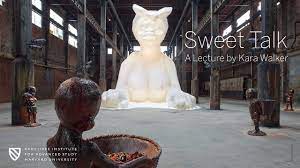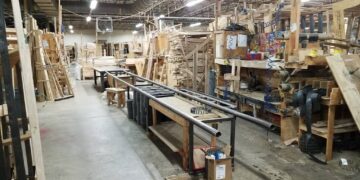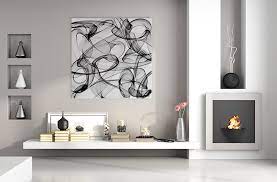The world of furniture design has been shaped and influenced by numerous artistic movements throughout history. One of the most significant influences in recent times has been modern art and sculpture. In this article, the modern art movement emerged in the late 19th and early 20th centuries, and it challenged the traditional notions of art, breaking away from the past and creating new styles and forms. The influence of modern art and sculpture on furniture design has been tremendous, and in this article, we will explore some of how this influence has manifested itself.
The Origins of Modern Art and Sculpture
Before we dive into the impact of modern art and sculpture on furniture design, it’s important to understand the origins of this artistic movement. Modern art emerged in the late 19th century as a reaction to the traditional art forms of the time. Artists began to experiment with new styles, techniques, and materials, breaking away from the constraints of the past.

One of the most significant developments during this time was the advent of abstract art. Artists began to create works that focused on form, color, and texture rather than representing the world realistically. The Cubist movement, founded by Pablo Picasso and Georges Braque, was a major influence on this development. Cubism broke down objects into geometric shapes and distorted forms, creating a new way of seeing and representing the world.
Another significant movement was Surrealism, which emerged in the 1920s. Surrealism aimed to explore the subconscious mind, using dreamlike imagery and symbolism to create works that challenged traditional notions of reality.
The Impact of Modern Art and Sculpture on Furniture Design
The influence of modern art and sculpture on furniture design has been profound, as designers began to break away from traditional styles and explore new materials, forms, and functions. One of the most significant developments during this time was the emergence of functionalism, which emphasized the importance of function over form. This idea was particularly influential in the design of furniture, as designers began to prioritize comfort, durability, and ease of use.
One of the most important designers of this time was Marcel Breuer. Breuer was a Hungarian-born architect and furniture designer who worked closely with the Bauhaus school of design. He is best known for his use of tubular steel in furniture design, which he began experimenting with in the early 1920s. This material was light, strong, and versatile, making it ideal for creating furniture that was both functional and aesthetically pleasing.
Breuer’s iconic Wassily chair, designed in 1925, was a testament to his innovative approach. The chair featured a cantilevered frame made from tubular steel, with leather straps forming the seat and backrest. It was an instant success, and it remains a classic example of modern furniture design to this day.
Another designer who was heavily influenced by modern art and sculpture was Charles and Ray Eames. The husband-and-wife team was a pioneer of modern furniture design, creating pieces that were both functional and stylish. They drew inspiration from the art world, particularly the work of sculptor Alexander Calder. Calder’s mobiles, which were sculptures that moved in response to air currents, inspired the Eameses to create their mobiles, which they incorporated into their furniture designs.
One of the most iconic pieces from the Eameses is their Lounge Chair and Ottoman, which was designed in 1956. The chair featured a molded plywood shell, with leather cushions providing comfort and support. It was a revolutionary design, combining comfort and style in a way that had never been seen before.
The Influence of Modern Art on Materials
Modern art and sculpture also had a significant impact on the materials that were used in furniture design. During this time, designers began to experiment with new materials, such as plastic and fiberglass, which were not traditionally used in furniture design. These materials allowed for greater flexibility and durability, as well as new shapes and forms.
One of the most influential designers in this regard was Verner Panton, a Danish designer who is best known for his use of plastic in furniture design. Panton’s designs were bold and colorful, and his use of plastic allowed him to create furniture that was both durable and visually striking. His Panton Chair, designed in 1960, is a classic example of his work. The chair is made from a single piece of molded plastic, with a curved shape that provides both comfort and style.
The Impact of Sculpture on Form
The sculpture also had a significant impact on furniture design during the modern art period. Sculptors were experimenting with new forms and shapes, and designers began to incorporate these ideas into their furniture designs.

One of the most influential sculptors of this time was Henry Moore, who was known for his abstract forms that evoked the human body. Moore’s work inspired designers to create furniture that was organic and sculptural in form, such as Arne Jacobsen’s Egg Chair, designed in 1958. The chair featured a curved shape that enveloped the body, creating a sense of comfort and security.
Another designer who was heavily influenced by sculpture was Isamu Noguchi. Noguchi was a Japanese-American artist and designer who worked in a variety of mediums, including sculpture, furniture, and lighting design. His furniture designs were often inspired by his sculptural work, and he incorporated elements of sculpture into his furniture designs. One of his most iconic designs is the Noguchi Coffee Table, which features a sculptural base made from curved wood pieces that interlock to form a stable base for the glass top.
Conclusion
The influence of modern art and sculpture on furniture design has been significant, shaping the way that designers approach to form, function, and materials. Modern art and sculpture challenged traditional notions of art, encouraging designers to experiment with new forms and shapes and to prioritize function over form. The use of new materials, such as plastic and fiberglass, allowed designers to create furniture that was both durable and visually striking, while the incorporation of sculptural elements added a sense of organic form and texture to furniture design. As a result, modern furniture design has become more accessible, comfortable, and aesthetically pleasing, thanks to the influence of modern art and sculpture.
Today, we continue to see the impact of modern art and sculpture on furniture design. Contemporary designers continue to experiment with new materials, shapes, and forms, creating furniture that is functional, comfortable, and visually interesting. Many designers draw inspiration from modern art and sculpture, incorporating abstract forms, bold colors, and unexpected materials into their work.
For example, the work of the Brazilian designers Fernando and Humberto Campana is heavily influenced by their country’s rich culture and history of craft. Their designs incorporate traditional Brazilian materials, such as woven straw and recycled rubber, into contemporary furniture forms that are both functional and artistic. The Campana brothers’ designs are often whimsical and unexpected, reflecting their interest in exploring the boundaries between art and design.
In conclusion, the influence of modern art and sculpture on furniture design has been significant and far-reaching. By challenging traditional notions of form, function, and materials, modern art and sculpture opened up new avenues for furniture designers to explore. Today, contemporary designers continue to draw inspiration from modern art and sculpture, creating furniture that is both functional and aesthetically interesting. As a result, modern furniture design has become more accessible, comfortable, and visually pleasing, thanks to the ongoing influence of modern art and sculpture

















